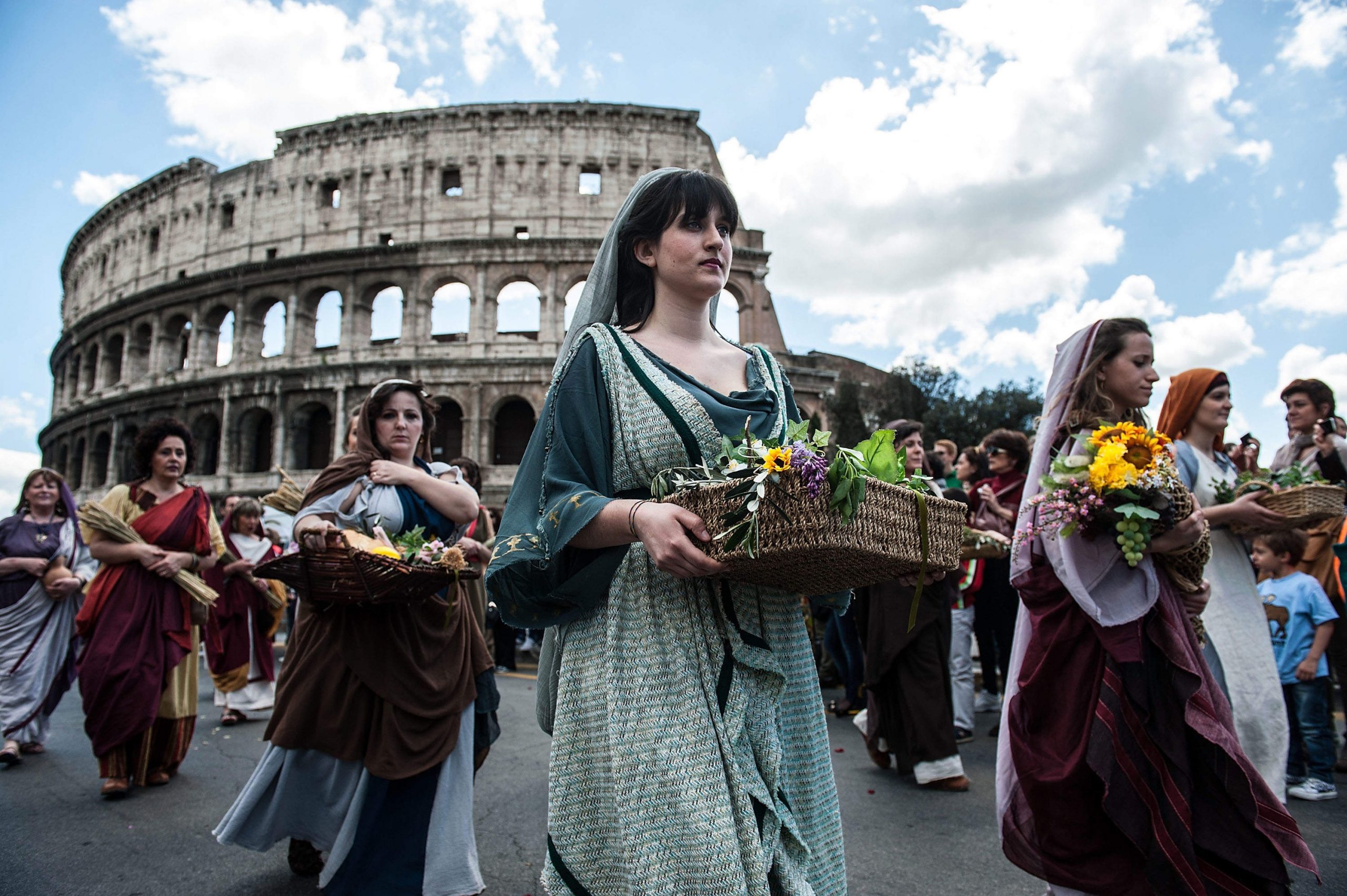
When it comes to the women of the Roman Empire, it’s usually the Julio-Claudians most people will have heard of. Poisonous Livia; promiscuous Messalina, reputed to have had 25 lovers in one night; the ultimate pushy mother Agrippina – so annoying that her son Nero tried to sink her boat, and still she failed to die.
That they were part of the first Roman imperial dynasty, and immortalised in Robert Graves’ I, Claudius, partly explains their fame. But directors looking for the next Game of Thrones should look later in Roman history and consider Aelia Galla Placidia (388-450). Daughter, sister, wife and mother of emperors, Placidia’s life reads like Disney crossed with Eastenders with added barbarians, providing all the salacious elements viewers could want.
A neglected childhood and evil foster-parents
After Placidia’s father emperor Theodosius I died in 395, her half-brothers, 18 year-old Arcadius and 10 year-old Honorius, became emperors of the Eastern and Western Roman Empires respectively (it had split into two by this point). Placidia, meanwhile, grew up in the household of Stilicho, a half barbarian Roman general who was guardian to Honorius, and his wife Serena.
Stilicho and Serena’s main aim was the throne. So they married both their daughters to Honorius (after the first one died, there was no point wasting the second) in the hopes of becoming grandparents to an emperor. Placidia, meanwhile, remained curiously unwed for an aristocratic Roman teenager – a classic case of Cinderella and the favoured stepsisters? Anyway, when both daughters failed to produce heirs, plan C was to marry their son Eucherius to Placidia.
Stilicho and Serena’s scheming caught up with them, however. He was executed in 408 accused of planning to replace the Eastern emperor (now Arcadius’ seven year old son, Theodosius II) with Eucherius (he was also executed). Two years later, Serena was accused of conspiring with enemy-of-the-state Alaric the Visigoth – and guess which imperial family member was asked to pass judgement? In a cold move, Placidia sentenced her foster mother to death by strangulation, a sign perhaps of quite how much she’d enjoyed her childhood.
Abduction and romance
The year 410 proved a big one for Placidia, as that pesky Alaric sacked Rome while she was living there. Clearly thinking an imperial princess would be a great bargaining chip, the Visigoths took Placidia with them. Unfortunately for both parties, getting his half-sister back wasn’t high on Honorius’ to-do list, and Placidia spent six years on the road with the barbarians.
Life may have not been terrible, though. Alaric died of fever and was succeeded by his handsome brother-in-law Athaulf. In a plot twist similar to Beauty and the Beast, Placidia ended up marrying her captor in 414, in what some described as a love match; they had a son, Theodosius to complete this rosy picture.
On a side note, Athaulf’s wedding gift to Placidia was fifty handsome young men, carrying dishes containing spoils from Rome. The wedding would make a great on-screen spectacle – as well as providing a field day for any psychoanalysts watching.
Deaths, an ugly husband, incest and a near death experience
As if Placidia hadn’t had enough hardship for a lifetime, Theodosius died in his infancy, and Athaulf was assassinated in 415.
By 416 the Visigoths had had enough of Placidia and gave her back in exchange for grain. Honorius then married her off to his lead henchmen, and later co-emperor, Constantius – something she was unenthusiastic about, perhaps because contemporary descriptions give him “bulging eyes”. Their unhappy union at least produced two children, Justa Grata Honoria and Valentinian.
Fortunately, Constantius died in 421; not so fortunately, rumours starting flying around about an incestuous relationship between Placidia and Honorius. This seems to have soured their previously close relationship, and the two fell out in 423, causing Placidia to brave violent seas and near death to seek refuge in the overly pious court of her nephew Theodosius II, dominated by his extremely devout sister Pulcheria.
Placidia’s brother died later that year, and once a pesky usurper called John was sorted out with Theodosius’s backing, things started looking up again. In 425, Valentinian became Valentinian III at the grand old age of six years old, and Placidia became regent, effectively ruling the empire again until Valentinian came of age in 437AD – this time without a bulging-eyed ball and chain in tow.
Multiple season potential
As if all this didn’t provide material for at least a couple of seasons, being regent wasn’t a walk in the park for Placidia either. Not only did she have to deal with a power struggle to control her son (featuring such exciting characters as Aetius, Boniface and Flavius Felix), she also had a wayward daughter to deal with.
Honoria got knocked up by the help, had the baby – which then mysteriously disappears from all records – and upon being told she had to marry some boring chap called Herculanus Bassus, posted a ring to the enemy of the state du jour, Attila the Hun. Naturally Attila used it as a perfect excuse to demand his share of the Roman empire, and invaded. Kids, eh?
This article is part of the New Statesman’s Monarchy Week. Find more here.





